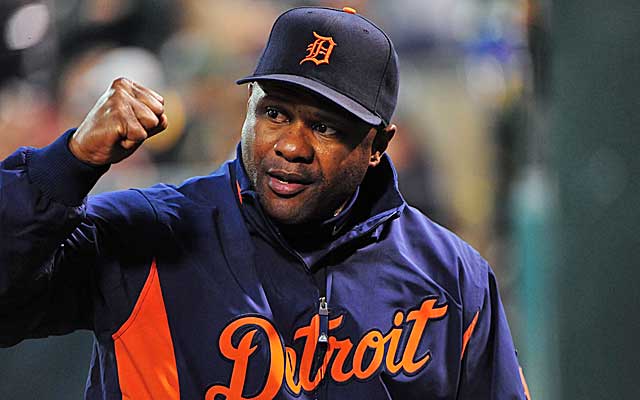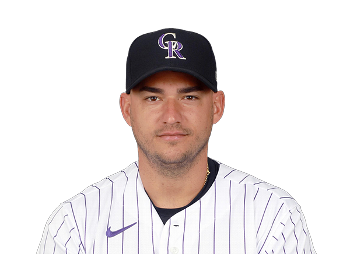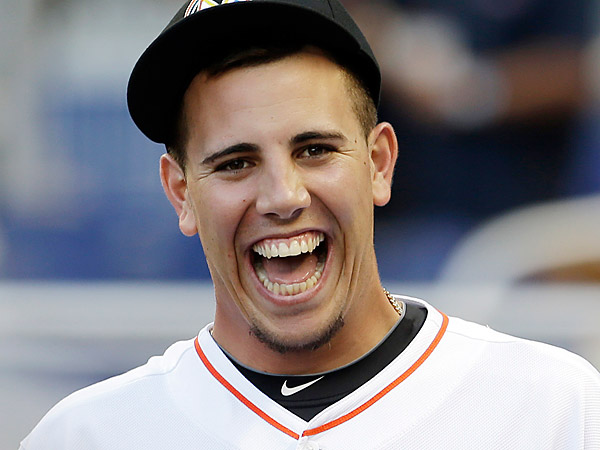Free agency signings have already
begun, as Geovany Soto re-signs with the Texas Rangers with a one-year, $3.05
million contract with incentives. The Rangers have stated that Soto will be
their #1 catcher for the 2014 season, as he was behind A.J. Pierzynski for the
next two years.
 The Mariners have also signed their
new manager in Lloyd McClendon. He was a coach for the Pittsburgh Pirates from
1997-2000 and the Detroit Tigers from 2006 until he was hired, and was manager
of the Pirates from 2001-2005. If you’re a Pirates fan, you might remember him
literally stealing 1st base after getting ejected from a game in
2001. Hilarious!
The Mariners have also signed their
new manager in Lloyd McClendon. He was a coach for the Pittsburgh Pirates from
1997-2000 and the Detroit Tigers from 2006 until he was hired, and was manager
of the Pirates from 2001-2005. If you’re a Pirates fan, you might remember him
literally stealing 1st base after getting ejected from a game in
2001. Hilarious!
The finalists for MVP, Rookie of
the Year, and Manager of the Year have also come out. I will talk more in depth
about these later, but here are the finalists:
AL MVP:
Miguel Cabrera
Mike Trout
Chris Davis
Paul Goldschmidt
Andrew McCutchen
Yadier Molina
AL Rookie of the Year:
Wil Myers
Jose Iglesias
Chris Archer
Jose Fernandez
Yasiel Puig
Shelby Miller
John Farrell
Bob Melvin
Terry Francona
Clint Hurdle
Fredi Gonzalez
Don Mattingly
I’ve been taking a look at the top
free agent hitters over the past few days, as well as the free agent hitters
that teams should watch out for, but we’re only halfway there. There’s an
abundance of pitchers that are on the market this year, including Japanese star
Masahiro Tanaka, who will be a star wherever he goes.
But these pitchers, as well as some
of the top hitters, want a whole lot of money. The question is: Are they worth
that much money?
I’ve looked at Wins Above Replacement a lot in this article. A WAR of 2.0 or higher is a solid starter, a
WAR of about 5.0 is all-star quality, and a WAR of 8.0 or higher is MVP status.
Yes, you will find different WAR numbers if you look at Baseball-Reference or
Fangraphs, because they incorporate different things into the equation, but
overall it’s relatively the same.
But take for example the Mike Trout
vs. Miguel Cabrera race… again. This year, Trout had a 9.2 WAR, which was the
best for a hitter since Barry Bonds. Miguel Cabrera’s was 7.2, which is still
very good, but not 10.9 like Trout.
Here’s where things get
interesting. Let’s average both numbers, which makes 8.2, and now give it to
both players. Before, if you had to give out the MVP just by Wins Above Replacement, holding all other factors constant,
then you’d give it to Trout. But now (same conditions), both have the same WAR,
so who do you pick? Do you just flip a coin?
Remember what MVP stands for: Most
Valuable Player. Which player would teams rather have, even if their numbers
were the same? I’d hope they’d pick Mike Trout. Why? Because he’s cheaper.
Yes, it’s all about the money game.
In 2013, Mike Trout made $510,000, and Miguel Cabrera made $21,000,000. Hell
yeah I’d rather take Trout.
You can find the equation for Wins
Above Replacement here, and you should notice that it does not include anything
about salary. I’ve been working on trying to fix this, and I think I’ve found
an answer. I call it Wins Above Salary Player (WASP), averaging how many wins a
player really gets for a team compared to another player with relatively the same salary.
Before, my equation was:
|
|
So we’re working with three
variables: WAR, the player’s salary, and the average salary of, in this
example, the 2013 salary. Luckily for this, the 2013 salary is the same for
both Trout and Cabrera.
According to
baseballplayersalaries.com, the actual average MLB Salary (adjusted) is
$3,305,393. So let’s plug in some numbers.
Trout’s WASP: 9.2* (3305393/510000)
= 59.627
That’s absurd!
Cabrera’s WASP: 7.2* (3305393/21000000)
= 1.133
Oof.
Yes, it’s obvious that Trout needs
a raise. But does Cabrera need a cut? When you look at his resume, you can
argue no. That’s when I realized that I need to adjust some things. I’ve
divided WASP into two equations, and now I’ve added a constant a and b, to players
with salaries below the average and above, respectively. If the player’s salary
is the exact same as the average, then the constant is just one.
Using calculations, I’ve found a (for players with salaries below the
average) to be .7265. For b (players
with salaries above the average), I’ve found it equal to 1.4722.
So now we calculate Trout and
Cabrera:
Trout: WASP= 9.2* .7265*
(3305393/510000) = 43.318
Cabrera: WASP = 7.2 * 1.4722*
(3305393/21000000) = 1.668
So did this do anything? A little-
it helps shorten some of the outliers like Trout. Cabrera is still not even a
quality starter, though. But yes, Cabrera is still a great player. So what do I
do?
What I’m saying is that no player is worth $21 million/year.
Think about what you can do with $21 million. Remember when the Red Sox traded
Josh Beckett, Adrian Gonzalez, and Carl Crawford? Gonzalez was worth $21
million, Beckett worth $15.75 million, and Crawford $20 million, so what that
did is that it got some salary surplus so they could go after other players.
And that’s what they did- they got
players like Shane Victorino, Mike Napoli, and Koji Uehara. Combined, they are
worth $30,250,000. That gives them a surplus of $26.5 million.
Let’s look at WASP without these
outliers. Hisashi Iwakuma, a Cy Young candidate, had a 7.0 WAR and made $6.5
million in 2013. His WASP would be 5.24. That’s still really good. Allen Craig,
who was crucial to the Cardinals run to the postseason, had a 2.2 WAR with a
$1.175 million contract. His WASP rounds to 3.019. That makes him an even
bigger quality starter.
|
|
When Player Salary is less than the
Average Salary, and:
|
|
When Player Salary is greater than
the Average Salary.
EDITORS NOTE: To make things a bit more accurate, for players whose salaries are between $3 million and $4 million, you can say that the coefficient of the value is just one. Then it would just be WAR * the ratio.
EDITORS NOTE: To make things a bit more accurate, for players whose salaries are between $3 million and $4 million, you can say that the coefficient of the value is just one. Then it would just be WAR * the ratio.
If a player’s WAR is negative, then
take the reciprocal of the ratio between salary and average salary. That cuts
some slack for a player who’s salary is less than the average, but really beats
up on the guys that are making the big bucks.
How do you like it? Please email me
at statsbuddy42@gmail.com for any
questions/comments/concerns, or comment below with your opinion.
-Evan Boyd






No comments:
Post a Comment